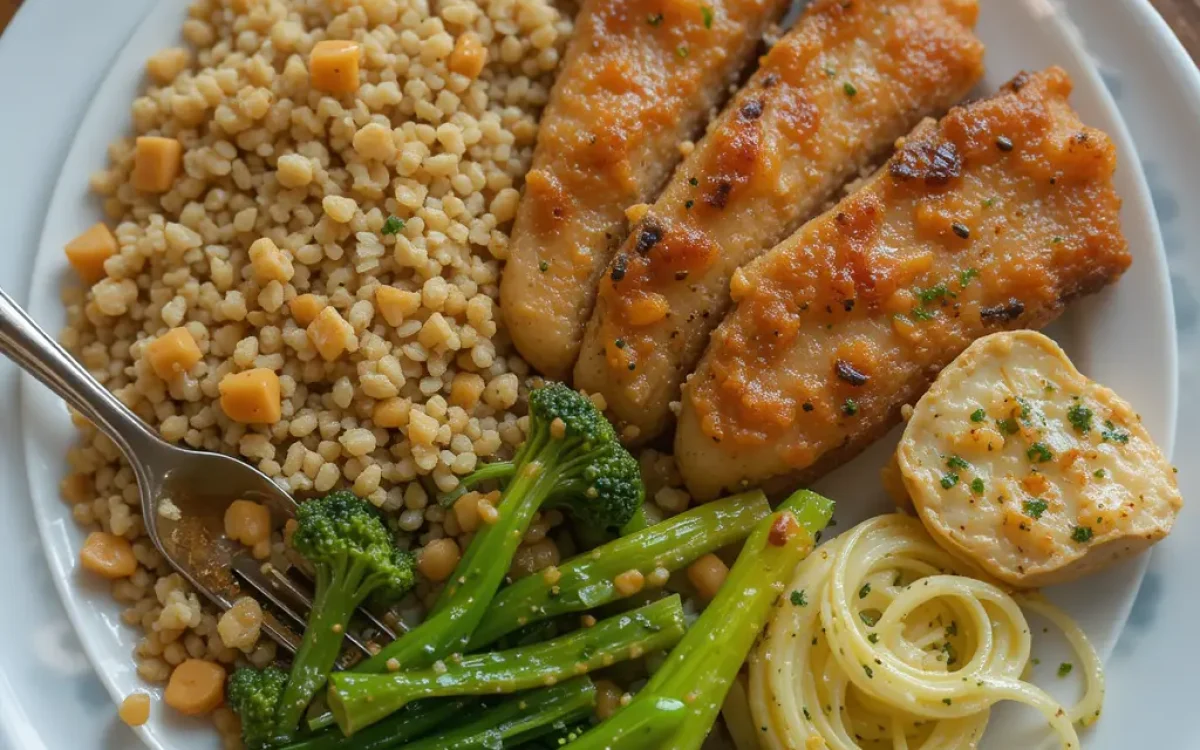Imagine feeling energized throughout the day without the need for constant caffeine boosts. A balanced diet can be the key to unlocking this sustained energy. This article explores how specific food choices can enhance your vitality. By understanding the role of nutrients, you can create meals that support your body’s energy needs. Discover practical tips and strategies to design a diet that fuels your daily activities effectively.
Understanding the Basics of a Balanced Diet
Creating a balanced diet is like assembling a puzzle. Each piece, or food group, plays a crucial role in providing the energy and nutrients our bodies need. As a nutritionist, I often compare it to fueling a car. Without the right fuel, the car won’t run efficiently. Similarly, our bodies need a variety of foods to function optimally.
The Core Components of a Balanced Diet
A balanced diet includes a mix of carbohydrates, proteins, fats, vitamins, and minerals. Think of carbohydrates as the body’s primary energy source, much like gasoline for a car. Proteins are the building blocks, essential for growth and repair. Fats, often misunderstood, are vital for brain health and hormone production. I remember a client who feared fats, only to realize their importance after feeling more energetic once they included healthy fats in their meals.
Vitamins and minerals, though needed in smaller amounts, are like the oil that keeps the engine running smoothly. Without them, our bodies can’t perform at their best. I once met someone who avoided fruits and vegetables, missing out on these crucial nutrients. After incorporating them, they noticed a significant boost in their energy levels.
Personal Insights on Balanced Eating
In my experience, a balanced diet is not about strict limitations. It’s about variety and moderation. I often tell my clients to enjoy their favorite foods in moderation. This approach not only supports physical health but also mental well-being. After all, food is meant to be enjoyed. When I see someone discover the joy of eating a balanced diet, it reminds me why I love being a nutritionist. It’s about finding that sweet spot where health and happiness meet.
Key Components for Energy-Boosting Meals
Creating energy-boosting meals is like crafting a masterpiece. Each ingredient plays a vital role in fueling your body. As a nutritionist, I often compare it to building a house. You need a strong foundation, and in this case, that foundation is a balanced diet. Let’s explore the key components that can help you achieve optimal energy levels.
Carbohydrates: The Primary Fuel Source
Carbohydrates are the body’s main source of energy. Think of them as the gasoline for your car. Without them, your body struggles to function efficiently. Whole grains, fruits, and vegetables are excellent sources. I remember a client who switched from refined grains to whole grains and noticed a significant boost in energy. It’s amazing how such a simple change can make a big difference.
Proteins and Fats: Supporting Players
While carbohydrates are crucial, proteins and fats also play essential roles. Proteins help repair and build tissues, while fats provide long-lasting energy. Imagine proteins as the builders and fats as the insulation in your house. Together, they create a stable environment. Including lean meats, nuts, and avocados in your meals can enhance your energy levels. In my opinion, a balanced diet for optimal energy should always include these components.
Incorporating these elements into your meals can transform your energy levels. Energy-boosting meals are not just about what you eat but how you combine these nutrients. Remember, a well-balanced diet is the key to unlocking your full potential. So, next time you plan your meals, think about how to create a balanced diet for optimal energy. Your body will thank you!
Incorporating Superfoods for Enhanced Vitality
Incorporating superfoods into your diet can significantly enhance your vitality. These nutrient-rich foods are like nature’s powerhouses, offering a concentrated dose of vitamins, minerals, and antioxidants. As a nutritionist, I often recommend superfoods to clients looking to boost their energy levels naturally. Imagine starting your day with a smoothie packed with kale, chia seeds, and blueberries. It’s like giving your body a jumpstart, much like fueling a car with premium gasoline.
Understanding the Power of Superfoods
Superfoods are not just a trend; they are a practical way to improve your diet. Foods like quinoa, salmon, and almonds are excellent examples. They provide essential nutrients that support overall health. For instance, quinoa is a complete protein, meaning it contains all nine essential amino acids. This makes it a fantastic choice for vegetarians seeking to maintain a balanced diet for optimal energy. Personally, I find that adding a handful of almonds to my afternoon snack keeps me energized throughout the day.
Real-Life Benefits and Anecdotes
I’ve seen firsthand how superfoods can transform energy levels. One of my clients, Sarah, struggled with afternoon slumps. By incorporating superfoods like spinach and sweet potatoes into her meals, she noticed a remarkable improvement in her vitality. She described it as feeling more alert and focused, which is crucial for her demanding job. This anecdote highlights the real-world impact of making small dietary changes. In my opinion, the key is consistency. Regularly including superfoods in your meals can lead to sustained energy and improved well-being.
Meal Planning Tips for Sustained Energy
Creating a balanced diet for optimal energy is like crafting a masterpiece. It requires thought, planning, and a touch of creativity. As a nutritionist, I often find that meal planning is the cornerstone of achieving sustained energy throughout the day. It’s not just about what you eat, but how you organize your meals to keep your energy levels steady.
Understanding Your Energy Needs
Think of your body as a car. Just as a car needs the right fuel to run smoothly, your body needs the right nutrients. Meal planning helps you provide this fuel consistently. For instance, starting your day with a breakfast rich in complex carbohydrates and proteins can set the tone for sustained energy. I remember a client who swapped sugary cereals for oatmeal and noticed a significant improvement in her morning energy levels.
Practical Meal Planning Tips
One effective strategy is to include a mix of macronutrients in every meal. This means balancing proteins, fats, and carbohydrates. For example, a lunch of grilled chicken, quinoa, and a variety of colorful vegetables can keep you energized for hours. Another tip is to prepare snacks in advance. Having a handful of nuts or a piece of fruit on hand can prevent energy dips between meals.
In my experience, the key to successful meal planning is flexibility. Life is unpredictable, and sometimes plans change. Allowing room for adjustments can make the process less stressful and more enjoyable. Remember, the goal is to create a balanced diet for optimal energy, not to follow a rigid plan. By focusing on these tips, you can enjoy the benefits of sustained energy and a more vibrant life.
Conclusion
Creating a balanced diet for optimal energy is like crafting a masterpiece. It requires attention to detail, a mix of the right ingredients, and a touch of personal flair. As a nutritionist, I often compare it to tuning a musical instrument. Each nutrient plays a role, and together they create harmony in our bodies.
Reflecting on the Journey
Throughout this journey of understanding how to create a balanced diet for optimal energy, we’ve explored various aspects. From choosing the right carbohydrates to incorporating healthy fats, each step is crucial. I remember a client who struggled with afternoon slumps. By adjusting her breakfast to include more protein, she noticed a significant improvement in her energy levels. This small change made a big difference.
In my opinion, the key is to listen to your body. It tells you what it needs. Sometimes, a simple tweak, like adding more leafy greens, can boost your vitality. It’s not just about following guidelines; it’s about finding what works for you. I once tried a new recipe with quinoa and vegetables, and it became a staple in my diet. It was both nourishing and energizing.
As we conclude, remember that a balanced diet is not a one-size-fits-all solution. It’s a personal journey. Embrace the process, experiment with different foods, and enjoy the benefits of sustained energy. Your body will thank you for it.






